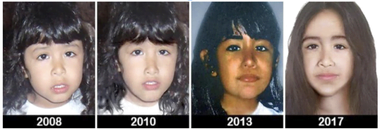Although some may think otherwise,
machismo and violence are behaviors that are learned from family, social and cultural models.
Nothing in our biological sex or in our genetics conditions us to act in a certain way. For this reason, and given the sad evidence that the tasks of prevention of gender violence between youth and adults are not effective enough, more and more specialists and organizations point out the importance of beginning to
prevent from childhood and adolescence
.
HOW TO PREVENT VIOLENCE FROM THE EARLY YEARS:
With the smallest:
In the first years of life, the approach does not focus on violence as such but on those
naturalizing behaviors
and they place boys and girls in stereotypical roles: for boys, domination and violence; for girls, care and submission. The goal is to expand the universe of possible roles regardless of the biological sex with which you were born. And, in addition, to banish the idea that “being a man” or “being a woman” necessarily implies embodying certain positions or behaving, thinking and feeling in a certain way.
-
Use non-sexist language.
What is not named does not exist. This, transferred to gender, implies that the fact that women do not have a symbolic representation in the language contributes to their invisibility. Special care must be taken with the adjectives we use when referring to them. “If, for example, we tell men that they have to be brave or not cry, we are giving them a message with a strong social mandate,” explains Cristina Gómez, coordinator of Educational Policies and Editorial Production at INADI. -
Include all kinds of toys.
We must uproot stereotypes in games and avoid choosing only toys and colors that reproduce the roles of men and women in our society. “When a 2-year-old boy takes a doll and plays at caring for it, but an adult comes and takes it out and gives him a ball or a toy gun, what he is saying is that caring is not his business”, Ricardo Gorodisch, a psychiatrist, psychoanalyst and president of the Kaleidos Foundation, maintains. -
Share housework and childcare for girls and boys.
Teach from example. Homes are a key space where macho conceptions are built and reproduced, so it is very important to keep in mind that boys and girls learn much more from what they see than from what we tell them. Gómez maintains that many of the contents stipulated in the Comprehensive Sexual Education (ESI) programs can be addressed by families. “You can work through games, colors, stories, and also through the roles that adult caregivers play at home with caring tasks, for example,” she says. From the earliest years, she recommends not imposing mandates in any of the activities carried out by children. -
Read stories, stories, or watch movies that empower both girls and boys.
From Inadi, they explain that much of children’s literature has contributed to reinforcing gender stereotypes. Therefore, they recommend bringing them stories where women take center stage for themselves, where men are not superheroes who come to rescue them, where all professions can be carried out by anyone, where women are not in place of dependence on men .
In adolescence:
As the boys get older, the problems get more complex. In the adolescent stage, violence is usually more manifest and there it is necessary to work to eradicate it, as well as raising awareness about the
gender stereotypes
, the myths about sex and love, the rejection of sexual diversity and violent courtships.
-
Talk about healthy ties.
“When they are approaching the last years of primary school by age, we can start talking to them about healthy ties and the prevention of violent dating, which is a fundamental issue during adolescence,” explains Gómez. Gorodisch agrees with her, explaining that the Kaleidos foundation launched the Deconstructor a few weeks ago, an interactive trivia that aims to banish myths and stereotypes that are usually present in adolescent ties. -
Do not transmit violent relationship models.
The internalization of the characteristics and modalities of relationship established within a family will gradually build the personality of boys and girls, influencing aspects of their lives such as the choice of a partner, the expression of emotions, among others. Alejandra Vázquez, psychologist, specialist in family violence and member of Surcos Asociación Civil, explains that if you learn that violence is the only possible way to solve interpersonal problems, the interrelation with people from other and new areas will be based on this premise. However, he clarifies that the models of parental bonding are not always reproduced “due to the influence of multiple compensatory factors such as, for example, the influence of a person outside the family who showed a relationship modality through affection” .
-
Denature situations and learn to put themselves in the other’s place.
Primary prevention must be aimed at problematizing and distorting stereotypical conceptions of relationships and gender issues. Work to promote social skills such as empathy, assertiveness, and expression of emotions. “Although it is true that in the last five years, with the green wave, great changes have been achieved, especially in the empowerment of girls, in general the level of violence and mistreatment between boys and girls continues to be terrible. In that sense, the ESI could be a great tool because beyond talking about contraceptive methods, it works on these issues, but it is applied in few schools “, considers Gorodisch. -
Work everything that implies giving consent.
According to specialists, passing cell phones and controlling themselves is much more frequent than what we would like to see in couple relationships between adolescents, although most of the time it is boys who control girls. “Most girls know about contraception but the prophylactic is not used because they push for unprotected sex as a way to mark possession: ‘Total, you’re mine,’ they say. In some cases, even girls They leave school at the request of their partner, who does not want her to see other boys. We know that seven out of 10 pregnancies are not wanted. It is not generally about ignorance of contraceptive methods, but that the girls are in a position of object and cannot decide “, exemplifies Gorodisch. -
Talk about these topics aiming for them to be able to connect emotionally.
It is key to achieve the involvement and commitment of boys and girls. “We know that gender-based violence is bad. To work in prevention, it is necessary not only to face the issues, but to experience them, developing appropriate dynamics so that the emotions that must erupt do so in a careful manner, and that that experience manages to change the thought. The challenge is clear: getting the girls to question their position as an object in relationships and the boys questioning the role of boys in order to change, “concludes Gorodisch.
You can access the Deconstructor and other resources of the Kaleidos Foundation from here.
ALSO
.
Publicado en el diario La Nación




